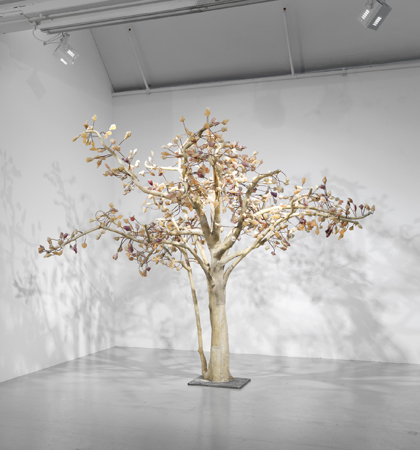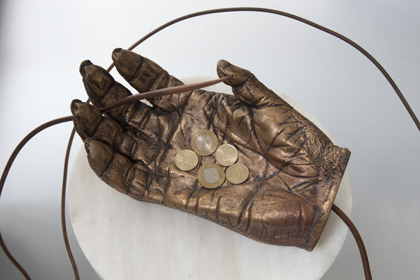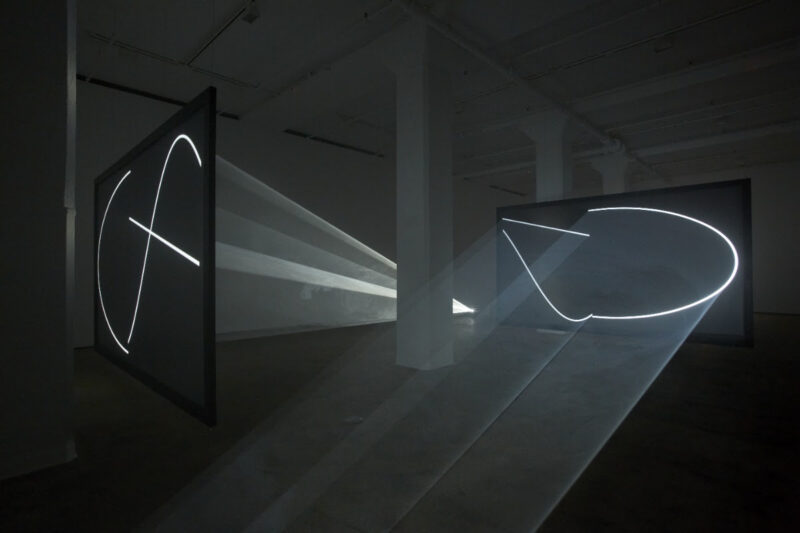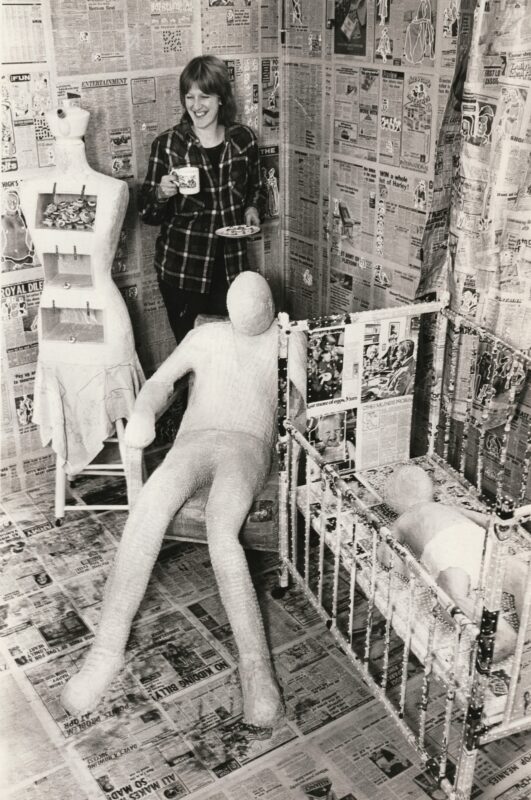
Bharti Kher: Solarum Series I, 2007–2010; Fibreglass, metal; 274 x 335 x 304 cm; Ursula Hauser Collection, Switzerland; Photo: Stefan Altenburger Photography Zürich; © Bharti Kher

Bharti Kher: rich man, poor man, beggar man, thief, (detail) 2010; Marble, bronze, copper wire, coins;112 x 63 x 54 cm/ Plinth: 89.7 x 30.5 cm; Ursula Hauser Collection, Switzerland; Photo: Stefan Altenburger Photography Zürich; © Bharti Kher
14th September – 11th November 2012.
Parasol unit foundation for contemporary art is to present works by Bharti Kher in her first solo exhibition held in a public art institution in London. The exhibition is composed of a selection of works from the recent past, with an emphasis on the artist’s sculptural works.
Known for her extensive use of everyday, found objects and imaginatively transforming their identity, Kher empowers her often otherworldly creations to present themselves unabashedly as if they were a natural part of our culture and environment. Her art practice is intimately intertwined with her Indian heritage, not only because she borrows Indian motifs and artefacts for her work, but also because she has an inquisitive mind and a strong desire to understand the sociological issues dictating the home environment and the role and value of women in a homeland that she herself only experienced for the first time as an adult. Such characteristics endow Kher’s work with a narrative quality and fascinating interiority of things that frequently contradict her practice of addressing more global and collective concerns. This tension is precisely what leads us more deeply into Kher’s work and world and prompts us to reposition our own relationship to her individual pieces.
Kher is perhaps best known for her elaborate and stunning bindi dot paintings: abstract, swirling constellations of colourful bindis glued to flat surfaces that create unique imagery somewhere between being illusory and hyper-realistic. But in recent years her artistic creations have become increasingly bold and unrestrained, several examples of which are on show in the exhibition. The phenomenal, life-size faux-elephant that is The skin speaks a language not its own, 2006, made of fibreglass and covered with serpent- or sperm-shaped white bindis, bears a symbolism that leaves viewers uncertain about the animal’s condition. The title of the work, always an important component of Kher’s works, suggests that physical appearance and inner values are often in conflict.
Another prominent sculpture in the exhibition, Solarium Series I, 2007–2010, is a 9-foot-tall fibreglass tree, its branches covered with hundreds of what seem, at a distance, to be golden autumnal leaves of extreme delicacy. On closer inspection, one sees that these leaves are actually miniature, waxy-looking heads of various fantastical creatures. Also on show is Kher’s The deft room, 2002-2011 a sculpture made of dark glass bricks. It is seemingly a strictly aesthetic minimalist work, but when one learns the origin of its bricks it begins to reveal its feminine bias and a wealth of symbolism. The barely translucent dark bricks are made from melted glass bangles, those that Indian women traditionally wear in multiples on their wrists. The merest hint of the radiant glow of bangles only becomes apparent when the bricks are exposed to light, without which they look dull, opaque and nondescript. The deft room, 2002-2011 stands for the silent presence of Indian women, but also for their unearthed potential. Finally, Warrior with cloak and shield, 2008, a life-size fibreglass figure of a woman adorned with exaggeratedly huge stag’s antlers, is part of a series of hybrid half-human, half-animal figures, which again testifies to Kher’s non-abidance mind and unflinching imagination.
Bharti Kher’s exhibition at Parasol unit is accompanied by a comprehensive publication that includes several insightful essays by Ziba Ardalan, Gayatri Sinha, and Tom Morton, alongside an interview with writer Aveek Sen. The publication will be distributed internationally.
Bharti Kher, born 1969 in London, England, now lives and works in New Delhi, India. She has shown internationally in numerous solo and group exhibitions. Most recently, Kher featured in the First International Biennale of Contemporary Art, 2012, at Mystetskyi Arsenal in Kiev, Ukraine; in Paris–Delhi–Bombay at Centre Pompidou, Paris, 2011; in 21st Century: Art in the First Decade, Queensland Art Gallery, Australia, 2010; Tokyo Art Meeting: Transformation, Museum of Contemporary Art, Tokyo, 2010; and in Susan Hefuna – Bharti Kher – Fred Tomaselli: Between the Worlds, Kunstmuseum Thun, Switzerland, 2010.
BHARTI KHER Parasol unit foundation 14 Wharf Road, London, N1 7RW
www.parasol-unit.org/









